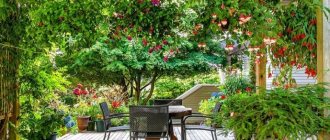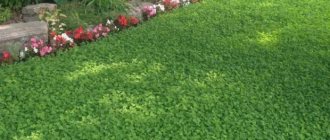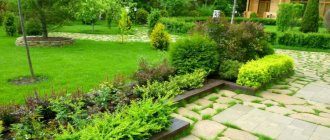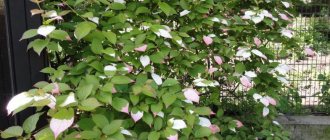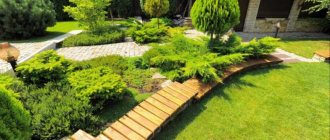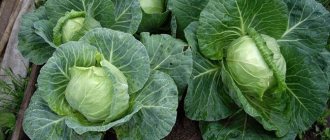Echinocystis has many names. One of the most common is the thorny plant. The fact is that this liana-like representative of the flora ripens fruits with pseudo-spines. It is impossible to prick yourself with them, but such a crop looks more than exotic. You may think that Echinocystis is a plant that you are not yet familiar with. But this is only until you find out its popular name - mad cucumber. Yes, yes, we are talking about that same fast-growing vine that in the spring envelops many country fences and hedges. Gardeners and vegetable gardeners love the thorny plant because it grows quickly and has a decorative appearance. And admirers of traditional medicine - for the beneficial properties of its fruits. Why do you love echinocystis? Let's find out together.
The wanderings of the prickly carp: how the mad cucumber got to Eurasia
Echinocystis is Native American. The homeland of this vine is North America. The peoples inhabiting this continent have long used the mad cucumber as a cure for many diseases. Despite the fact that the vine is considered poisonous. It is noteworthy that the thorny carp came to the territory of Eurasia at the beginning of the 19th century. Although, perhaps earlier, there is simply no evidence of an earlier arrival on our continent.
It is believed that the thorny plant was brought directly from Canada to Siberia, where its journey to the east began. During the Second World War, the plant spread to Western Europe. By the way, the liana came to our country from somewhere there. Possibly from Germany. Or perhaps from Austria. It is not known for certain.
By the end of World War II, Americans reintroduced Echinocystis into the territory of the former Soviet Union. And it was from this moment that the popularization of the mad cucumber began. The plant became so popular that until the end of the 90s of the last century it could be found in any country house. Then they forgot about it, but this did not affect the viability of the thorny carp. It turned out that the rabid cucumber can exist freely without human intervention. True, in this case he runs wild quite quickly.
A little more time passed - and Echinocystis moved closer to the water: to the banks of rivers, lakes and other natural and artificial reservoirs. Therefore, today the mad cucumber can easily be found in coastal areas - where, relatively speaking, a gardener has never set foot.
The mad cucumber is an aggressor plant. It confidently fights with trees and shrubs for territory and can easily survive them from the place that the thorny carp has chosen.
Possible difficulties
Echinocystis has enviable vitality. However, a combination of unfavorable circumstances - bright sun, poor soil, lack of moisture - affect the appearance and health of the plant. In this case, the maximum height is only a meter, there are few leaves and flowers. But even in such extreme conditions, the Prickly Carp still manages to produce seeds suitable for further use.
The main problem with keeping Echinocystis is uncontrolled spread.
To prevent self-seeding, you need to collect the seeds in time or put gauze or polyethylene covers on the fruits. Editorial team LePlants.ru
Botanical description of thorny carp
Prickly carp is one of the brightest and most charismatic representatives of the Pumpkin family. Even without knowing this, it’s easy to guess the relationship between pumpkin and crazy cucumber. The stems of Echinocystis are as tenacious and creeping as those of its relatives. If you plant a crazy cucumber near any vertical support (absolutely any), it will very quickly master it and crawl up.
The Echinocystis bush contains both male and female flowers. The first ones are smaller, collected in loose inflorescences. The latter, on the contrary, are significantly larger. The fruit of Echinocystis is a pumpkin, which, as it ripens, is cleared of the bluish coating and becomes fully green. The length of the pumpkin usually does not exceed 6 cm.
At first the fruit is quite soft. Hidden under the skin is a mucus-like pulp and two seeds that can be used to propagate the vine. After full ripening, pumpkins burst, reproducing on their own by sending ripened seeds directly into the ground.
The mad cucumber is a completely logical popular nickname for the thorny cucumber. If it rains for several days, the fruit of this vine becomes saturated with moisture and eventually bursts loudly due to internal pressure, due to which its seeds scatter over fairly large distances from the mother bush.
What is the Echinocystis plant?
Echinocystis is the name of a herbaceous annual that belongs to the Pumpkin family. The homeland of this unique culture is North America. Literally, the name of this interesting vine is interpreted as “thorny fruit.” It appeared because ripe fruits have a unique property - they crack and open with minimal touches. It is also surprising that this vine was previously considered an ordinary weed, but now it is a popular crop to complement the landscape design of private houses.
Echinocystis lobata - the only representative of the genus. Each bush is quite flexible, climbing, and also has a fibrous rhizome, which allows the shoots to absorb moisture. They are covered with green, furrowed bark and are slightly pubescent. The stems grow up to 6 meters. The nodules contain petiole-type leaves with strong and twisted tendrils.
The leaves are visually similar to those of grapes; they are colored in a light green shade, so they delight with their greenery on the site. The leaf blade is quite thin and smooth, has a lobed shape, and has up to 5 pronounced corners. The leaf reaches a length of up to 15 centimeters.
The culture blooms in early June and continues to delight with its beauty until October. The flowers are painted white; they form racemose buds. The same crop contains both male and female flowers. The corolla reaches a volume of up to 1 centimeter.
When the plant blooms, it releases a stunning scent that bees flock to. That is why the crop is considered a good honey plant and is actively grown by beekeepers. Honey from such a plant is very tasty, and its amazing amber color attracts with its unusualness.
Photo of the fruit of Echinocystis lobes
In early August, fruits begin to form on each bush. They are usually green in color in the form of seed pods, inside of which there are partitions. The length of such a fruit is up to 6 centimeters. The fruit has a green skin and small and soft spines. Inside, the seeds are flattened, visually they look like pumpkin seeds. The seeds are quite immersed in dense mucus. As the fruits ripen, they accumulate internal fluid. Since the thin skin is not able to withstand the pressure inside, the fruit bursts at the bottom. As a result, seed material with mucus can fly several meters away.
Features of planting prickly carp
To plant a crazy cucumber on your site, you will need seeds. And preferably fresh. The plant can be planted both in the autumn, closer to the end of the summer season, and in the spring.
- If you plant in the fall , you can get the first fruits of Echinocystis already in May.
- If you plant in the spring , then by autumn you will also be able to harvest.
The period of planting the plant in open ground depends on when you harvest the vine seeds. It is completely pointless to plant prickly carp in closed ground. At the very least, there is definitely no functional need for such actions.
Do not be afraid that seeds thrown into open ground in the fall will remain there over the winter. The spiny carp is an unusually persistent representative of the flora, which can easily overwinter without shelter or other sentiments. And don’t be surprised when, arriving at your dacha in April after a long winter, you find green self-seeding plantings of North American vines. In general, you should know that getting rid of echinocystis on the site is not as easy as we would like. To do this, you will have to take control of the ripening of its fruits and try to prevent them from bursting chaotically.
In order to thin out the planting of prickly carp at your own dacha, you need to pull out the excess seedlings before each of them forms a pair of full-fledged leaves.
There are several points that you should pay attention to if you intend to grow echinocystis in the garden and want to create the most comfortable conditions for its development.
- Priming. In order for plantings of crazy cucumber to grow as densely and naturally as possible, you need to plant the seeds in light and well-drained soil. It should not be alkaline. It is better if it has a slightly acidic or neutral reaction. Practice shows that crazy cucumbers grow best near bodies of water, with a sufficient level of soil moisture.
- Landing distance. In order for thorny plants to grow comfortably near each other, throwing seeds into the ground, be sure to maintain a distance between the plants. The minimum distance between plants is half a meter. The maximum sufficient is 0.7 meters.
What else needs to be taken care of in advance? Of course, about the presence of support. If it’s a fence or plank walls of a gazebo, great. But if it is mesh, it is extremely important that it is strong enough and securely fastened. The fact is that during the heyday of the vegetative period of the thorny carp, its crown, together with its fruits - crazy cucumbers - weighs very impressively. It is important that the support can withstand this weight and not collapse under it.
Echinocystis - a fascinating invader
Sometimes plants that no one planted appear completely unexpectedly at the dacha.
So one day, at the very edge of my plot, an unknown sprout emerged. At first it seemed that a zucchini or pumpkin seed that had accidentally fallen to the ground had sprouted. The newcomer grew extremely quickly, delicate carved leaves appeared one after another, a flexible stem climbed up the fence. It soon became clear that the plant had “escaped” from its neighbor. She had an unnamed garden vine growing year after year near the barn. In a book about vertical gardening, I found a picture, a fairly detailed description and a name - “echinocystis”. An annual native to North America, it feels right at home in our climate. Echinocystis is often confused with crazy cucumber, but these are two different plants, although they are from the same pumpkin family. By the way, the description stated that Echinocystis is capable of reaching ten meters in length. I’m not sure about this record, but over the summer the stem actually grew very long and covered the entire fence. It seems to me that five or six meters is not the limit for this plant. Small white-cream flowers form lush clusters with a pleasant honey aroma, and bees hover around them during flowering. Towards the end of summer, funny hedgehog fruits appear in place of the flowers, shaped like a kiwi. It’s a pity, of course, that only the form, but also the purely decorative properties of Echinocystis are quite enough to place it in the countryside. And the fibrous partitions in the dried fruits of the plant resemble tiny washcloths.
Although these “balls” are completely studded with thorns, they are quite soft and harmless, you won’t get pricked by them. Ripe fruits open, large dark seeds fall to the ground. They will overwinter well in the soil (they are not afraid of frost) and will sprout in late spring. If desired, the seeds can be collected and planted in the fall or spring in the chosen location. Echinocystis does not make any claims to the soil; it grows both in the sun and in the shade. For several years I have not noticed any pests or diseases on it. In general, in terms of endurance and unpretentiousness, an overseas guest can compete with weeds. Echinocystis is a real find in garden design. A fast-growing vine will help you decorate a fence, gazebo, arch, and disguise unsightly places on your site at no extra cost. If there is a dried tree left that cannot be cut down this season, just plant a few Echinocystis seeds nearby - it will decorate the trunk and branches. When there is no vertical support nearby, the vine is able to take on the role of a ground cover plant. The result is an original alternative to the lawn. This undemanding and handsome guest is good for everyone... And yet you should keep an eye on him. For example, a couple of years ago, echinocystis almost destroyed a young cherry tree. It seems that he did not grow so close to her and peacefully climbed the hedge... When I paid attention to the alien’s antics, the cherry tree was practically no longer visible. Fortunately, I managed to free her from the “aggressor”. Echinocystis just seems so openwork and airy. Yes, the stem is thin, but the tendrils with which it grabs the support are very strong; To break a tight spiral, you need to work hard. The weight of the plant that has come into force is also serious. Therefore, echinocystis should be kept under control, otherwise its independence and ability to grow rapidly can harm other garden inhabitants. It is better to remove excess sprouts immediately or replant while the plants are small - with two or three leaves. But if you immediately choose a suitable place for planting, this pretty vine will delight you without causing any trouble.
Recommendations for caring for echinocysts
Echinocystis has no need for humans at all. If you take care of it, the hedge will turn out beautiful and harmonious. But if for some reason you cannot provide the prickly carp with proper care, it will definitely not die from this. Yes, it will grow chaotically, but at the same time it will do it on its own. And it doesn’t matter what its location will be - pitch shadow, openwork partial shade or a place in the open sun.
In our country, mad cucumbers are grown as annual plants. With the arrival of cold weather, all you have to do is cut off the dried above-ground part of the vine with pruning shears, and thoroughly dig up the bed in which it grew all summer. The only thing the vine really needs is moisture. If you want your vertical gardening to be beautiful, lush and dense, water your exotica regularly. If you don’t have time for watering, plant the thorny plant near an artificial or natural reservoir so that it can extract water from the ground on its own.
Please note that after each watering it is advisable to loosen the soil in the bed with echinocystis. Otherwise, the wet soil will dry out under the influence of sunlight and become crusty. This will cause oxygen starvation of the exotic and will negatively affect the intensity of its growth.
Echinocystis, in principle, does not particularly need feeding. But if you have such an opportunity, it is still worth adding fertilizers to the soil. It is enough to do this twice, maximum three times. The first time you can feed the plant with compost. And the second - chicken droppings. If this happens a third time, feed the prickly carp with cow manure, but not fresh, but one that has been sitting for at least one year.
During the flowering period, the North American liana spreads its pleasant sweetish aroma everywhere. As a rule, many insects flock to it. Including useful ones. But keep in mind: it is not worth planting prickly carp near cultivated plants. Liana is capable of strangling those weaker than her. Therefore, in order not to lose the harvest, place the flowerbed with thorny carp away from garden beds and berry bushes.
Echinocystis poses a threat to fruit trees. Some summer residents specifically plant a vine near apple or plum trees in order to provide it with high-quality support. But the result is disastrous: a mad cucumber only needs a couple of years to crush a fruit tree. As a result, apple, pear and plum trees simply dry out.
Useful properties of Echinocystis
The use of inedible cucumbers in folk medicine is practiced with caution. But, if you use the fruits correctly, you can get benefits. Prickly carp is used to prepare decoctions or infusions that help fight tumors in the female genital area.
There is also a recipe for using fruit juice to treat a runny nose. Herbalists recommend using this product only when diluted with water (1:1).
Please note that the fruits are strictly contraindicated for patients with pancreatitis, as well as for any intestinal problems. Pregnant and lactating women, as well as people with a weak heart, should not be treated with liana-based decoctions. It is best to consult with specialists before deciding to start self-medication.
Use of Echinocystis fruits
Traditional medicine denies the use of this plant as a medicinal plant. Moreover, this vine is considered poisonous, so you need to work with it as carefully as possible. But adherents of traditional medicine, on the contrary, consider this plant a cure for seven ills. Populists use mad cucumbers as medicines for a number of serious diseases and painful conditions:
- malaria;
- amenorrhea;
- diarrhea;
- gout;
- rheumatism;
- kidney diseases;
- liver diseases;
- swelling.
It must be admitted that the use of crazy cucumber has repeatedly justified itself in situations where there were ulcers or abscesses on the patient’s skin. In addition, fruits with pseudo-spines are said to help with sinusitis. Whether or not to be treated with thorny fruits, everyone decides for himself. But it’s probably not worth condemning admirers of traditional medicine. Faith moves mountains, and the confidence that you are being treated correctly - even more so. However, you still need to know at least two sides of the coin. Now feel free to decide that for you Echinocystis is a medicine or an amazing plant for garden landscaping.
And finally, about it - about the design of the landscape of a personal plot, into which the thorny carp fits perfectly. With the help of this plant, hedges are grown to decorate recreational areas, for example, gazebos or terraces, as well as to decorate fences. For a long time, Echinocystis was considered a weed, but today it is almost the most popular representative of the flora used for vertical gardening. We should also not forget that bees love Echinocystis. Therefore, the vine is often used to attract beneficial insects to the site.
Join our Facebook group
Secrets of success
Echinocystis is one of the undemanding plants. It can adapt to living in brightly lit and shaded areas, but feels most comfortable in partial shade.
Prickly carp is also unpretentious in terms of soil. Any garden soil is suitable for him. But when growing in depleted soil, it is advisable to apply mineral fertilizers once a month.
Echinocystis' moisture needs are satisfied by natural precipitation. However, in particularly dry summers the plant should be watered periodically. The temperature and characteristics of the water are not of fundamental importance.
Among the advantages of the plant is its immunity to return frosts.
Propagation by seeds and transplantation
It reproduces by seed and is very viable. The strongest plants are those that have undergone natural stratification (overwintered in the ground). Therefore, ideally, they need to be sown before winter. You can also sow in spring.
Echinocystis seeds.
But seeds sown in May will sprout and begin their main growth only by mid-to-late June! You can also sow seedlings in late March-early April, then by May they will already be absolutely adapted to life in order to grow and bloom.
These plants cannot tolerate transplantation. They have a taproot. When transplanted, it breaks off very easily and is not restored.
Usage
This crop is mostly used for landscaping, but it can also be used for medicinal purposes and as a food crop. You can grow a crazy cucumber either with or without support, then it will spread along the ground, cover it and prevent weeds from growing. This is an excellent honey plant and, given the long flowering period, the mad cucumber can be planted by beekeepers. Honey obtained from the pollen of mad cucumber flowers has an amber hue and a wonderful aroma.
Photo: Maxim Minin, Rita Brilliantova
Author: Khromov Nikolay Vladimirovich Ph.D., senior. scientific co-workers Federal Scientific Center for Horticulture named after I.V. Michurina, scientific secretary of the Academy of Non-Traditional and Rare Plants, member of the All-Russian Society of Genetics and Breeders of the Russian Federation
Medicine prescriptions
Preparations for external use
- Fungus. You need to take 200–250 grams of fresh fruits of the plant and pour three liters of boiling water. Then the broth should brew for 2-3 hours, if desired, you can add a teaspoon of honey to it. You can use this infusion to make foot baths, and you can also use it to wipe the inside of your shoes as a preventive measure for fungal diseases.
- Haemorrhoids. It is recommended to boil the prepared fruits in sesame oil, then cool the mixture and use it as intended for external use.
- Gout. Squeeze the juice from the fruits of the mad cucumber, mix it with vinegar, then use the resulting product to make compresses on sore areas of the body.
Products for internal use
- Runny nose. Freshly squeezed juice from the fruits of the plant can be mixed with milk and dropped into the nose.
- Angina. You need to add honey and olive oil to the juice of the crazy cucumber fruits, then lubricate your throat with this product 2-3 times a day.
- Helminthiasis. To get rid of worms you need to take 1 teaspoon of dried parts of the plant and pour one glass of boiling water. Leave the resulting mixture for an hour, then filter and take 30 minutes before meals, 5 grams three times a day. This drug also helps with swelling and acts as a laxative.
Benefits and Applications
Echinocystis is grown as a vertical planter in the garden. With its help you can turn an old fence into a picturesque green hedge. Creeping shoots will be a wonderful ground cover crop to cover empty areas.
Aunt Tanya's advice. Crazy cucumber.
Echinocystis is in particular demand among beekeepers. Plantings of this annual serve as an excellent bait for bees. Nectar collected from liana flowers gives honey a specific aroma and a rich amber hue.
Garden flowers Annual and biennial flowers


